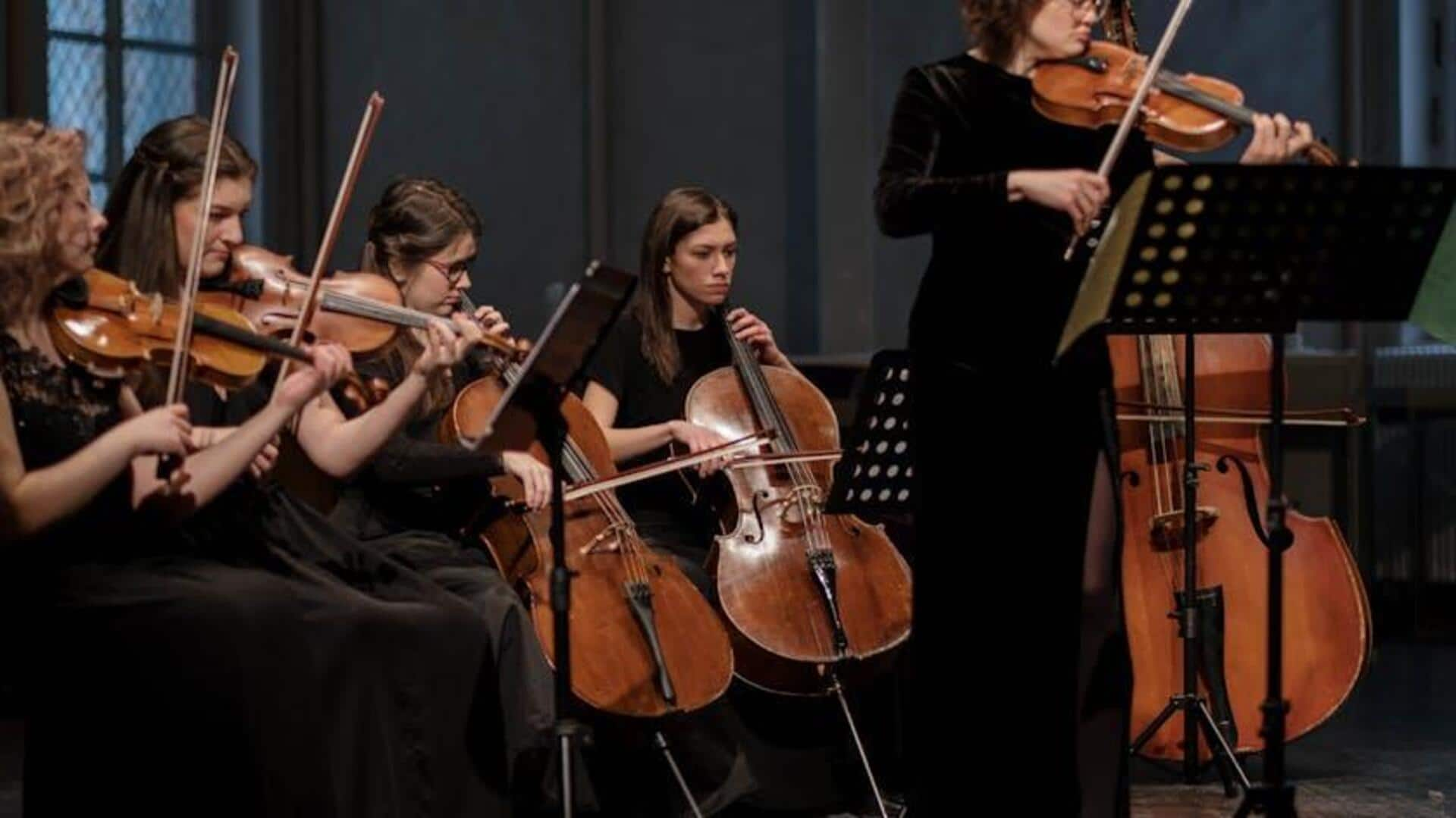
You can master cello instrument with these exercises
What's the story
Mastering harmonics on the cello demands a delicate touch and finely-tuned control over bow pressure. This article focuses on five exercises that help you develop the bow pressure control needed for clear, resonant harmonics. These exercises are beneficial for both beginner and advanced cellists, and they focus on improving sound quality through dedicated practice.
Grip control
Mastering the basics of bow hold
The key to developing good bow pressure is to start with a relaxed and flexible bow hold. Concentrate on keeping your hand relaxed and your fingers flexible. One popular exercise is to hold the bow in the air and gently bounce it, letting your fingers naturally react to its weight and movement. This exercise trains your grip to be sensitive and responsive, allowing you to adjust pressure without introducing tension.
Sounding point
The art of sounding point adjustment
The sounding point, or where the bow contacts the strings, is crucial for harmonic clarity. Experiment with long, slow bows while gradually shifting closer to and away from the bridge. Observe how the change in sounding point affects the tone quality and volume. Find that sweet spot where harmonics resonate most clearly, usually closer to the bridge than for non-harmonic notes.
Speed control
Dynamic bow speed variations
Bow speed and pressure have an inverse relationship; increasing one typically requires decreasing the other to produce the best sound. Practice scales at varying dynamics (from pianissimo to fortissimo) while actively managing your bow speed. Begin at a slower pace, ensuring a steady tone across all dynamics. Then progressively increase your speed while retaining sound control.
Weight transfer
Incorporating weight transfer exercises
Proper weight transfer from finger to finger and through the arm into the bow is key to mastering pressure control. By playing long notes and gradually shifting more weight from your index finger down to your pinky finger and back again, you can develop a feel for nuanced pressure changes. This exercise not only builds control but also increases endurance for longer playing sessions.
Ghost notes
Developing pressure sensitivity with ghost notes
Ghost notes are achieved by lightly touching the string without fully pressing down. This results in a whispery sound that prioritizes overtone production instead of the fundamental pitch. By practicing ghost notes across various strings, you will cultivate a heightened sensitivity to the subtlest pressure changes, ultimately enhancing your ability to generate distinct harmonics even with the lightest touch.